Milkweed is not only a beautiful addition to your garden but also a cornerstone species for the conservation of monarch butterflies. With its vibrant blooms and lush foliage, milkweed has become a beloved plant among gardeners and butterfly enthusiasts alike. This guide is designed to provide expert tips for successful milkweed care and growing, ensuring that these butterfly favorites thrive in your outdoor space.
Understanding the needs of milkweed, from the right planting conditions to ongoing maintenance, is essential for creating a sanctuary for monarchs and other pollinators. Whether you’re a seasoned gardener or a newcomer to the world of butterfly gardening, this comprehensive guide will navigate you through the process of cultivating these vital plants.
When and Where to Plant Milkweed?
Timing and location are critical when planting milkweed. The best time to plant milkweed is in spring after the last frost, or in early fall, allowing the plants to establish themselves before winter. Milkweed thrives in a sunny location with well-drained soil. While they are hardy and adaptable, milkweeds prefer a spot that mimics their natural habitat, such as open fields or prairies.
When considering how to plant milkweed for butterflies, choose a location that offers at least six hours of sunlight daily. This ensures ample nectar production, essential for attracting monarchs and other pollinators. Additionally, avoid areas with heavy foot traffic or frequent disturbances, as milkweed requires a peaceful environment for optimal growth.
Keep in mind that milkweed also serves as a host plant for monarch caterpillars. Therefore, it’s important to plant them in an area where you’re comfortable observing the lifecycle of these beautiful insects, which includes the presence of caterpillars and their feeding habits.
How to Grow Milkweed in Pots?
Growing milkweed in containers is a great option for those with limited space. To grow milkweed in pots, select a container with ample drainage holes and use a well-draining potting mix. Milkweed’s deep taproots require a deep pot, so choose one that is at least 12 inches deep.
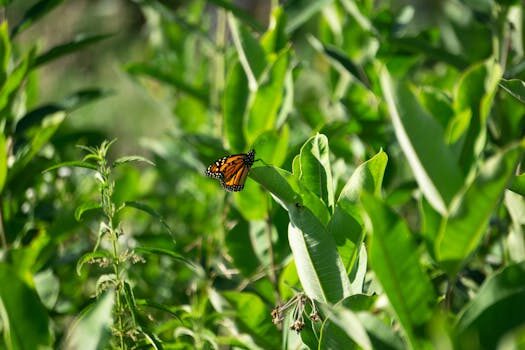
Container-grown milkweed requires more frequent watering than garden-planted varieties. Monitor the soil moisture and water when the top inch feels dry. Be mindful of the increased nutrient needs of potted plants and consider adding a slow-release fertilizer at the beginning of the growing season.
Choosing the best milkweed varieties for monarchs is essential, even in container gardening. Native species are always preferable, as they have evolved alongside local wildlife. Research the milkweed species that are native to your area and suited for container life.
How to Grow Milkweed Seeds Outdoors?
Milkweed growing tips for home gardeners often start with the propagation of seeds. To grow milkweed seeds outdoors, stratification is typically necessary. This process involves simulating winter conditions to break the seed’s dormancy. Mix the seeds with moist sand and store them in the refrigerator for 30 days before sowing.
After stratification, sow the seeds directly into the soil in a sunny location. Cover them with a light layer of soil, as milkweed seeds require some sunlight to germinate. Keep the soil moist until germination, which usually takes 10 to 15 days. Thin the seedlings to prevent overcrowding, which can lead to fungal diseases.
Seasonal planting of milkweed should align with regional climates. In colder regions, plant the seeds in late fall so they can naturally stratify during the winter. In warmer areas, spring planting after artificial stratification is recommended.
What Are the Common Milkweed Problems and How to Solve Them?
Milkweed plants are generally hardy, but they can encounter some issues. Common milkweed problems include pests such as aphids and spider mites. To combat these, use a gentle insecticidal soap or neem oil, and encourage the presence of natural predators like ladybugs.
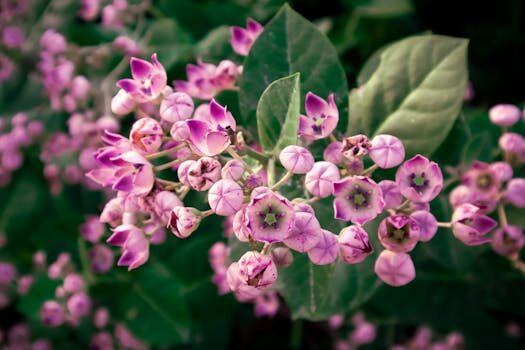
Fungal diseases such as powdery mildew can also affect milkweed. Ensuring proper air circulation and avoiding overhead watering can prevent these issues. If infection occurs, remove affected leaves and apply a fungicide if necessary.
Another problem is the potential invasiveness of non-native milkweed species. To prevent invasiveness, opt for native species to your area and remove seed pods before they open and disperse seeds.
Can I Divide Milkweeds?
Milkweed can be divided to propagate new plants or to manage growth. The best time to divide milkweeds is in the early spring or fall when the plant is dormant. Carefully dig up the plant, preserving as much of the root system as possible, and use a sharp knife to divide the root clump. Replant the divisions immediately, providing ample water until they establish.
Dividing milkweed is an excellent way to propagate new plants without sowing seeds. It also helps to rejuvenate older plants that may have become too large or crowded. Remember that some milkweed species have deep taproots, making division more challenging and potentially harmful to the plant. Always research your specific species before attempting to divide.
Is Milkweed Sap Poisonous?
The sap of the milkweed plant contains cardiac glycosides, which can be toxic to humans and animals if ingested in large quantities. Exercise caution when handling milkweed, particularly if you have sensitive skin, as the milkweed sap can cause irritation. It’s advisable to wear gloves when pruning or handling the plants.
 How to prune rosemary and when to do it: simple tips for healthy herbs
How to prune rosemary and when to do it: simple tips for healthy herbsWhile the sap is toxic, it is also the key to the monarch butterfly’s defense mechanism. Monarch caterpillars feed on milkweed and store the toxins in their bodies, making them unpalatable to predators. This fascinating adaptation underscores the unique relationship between milkweeds and monarchs.
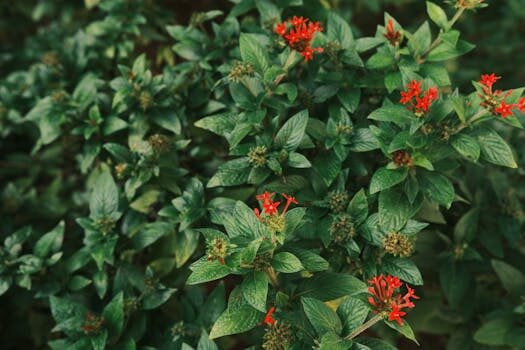
The sap isn’t typically a problem unless you have curious pets or children who may ingest the plant. In such cases, consider planting milkweed in an area that is out of reach or educating family members about the plant’s toxicity.
What Is the Link Between Milkweeds and Monarch Butterflies?
Milkweed and monarch butterflies share a symbiotic relationship. Milkweed plants are the sole food source for monarch caterpillars and provide nectar for the adult butterflies. Without milkweed, monarch populations suffer, as the caterpillars cannot survive without it. This makes milkweed planting a crucial conservation effort.
By fostering a butterfly habitat with milkweed, gardeners are directly supporting the lifecycle of the monarch butterfly. Conservationists emphasize the importance of planting native milkweed species, which are best suited for local monarch populations and do not disrupt the butterflies’ migration patterns.
The decline of milkweed habitats due to agriculture and urban development has significantly impacted monarch populations. Gardeners can make a positive impact by planting milkweed and creating monarch-friendly gardens. Doing so contributes to the ecological benefits of milkweed, supporting not only monarchs but a variety of other pollinators as well.
Where to Buy Milkweed?
Finding milkweed for your garden is becoming easier as awareness of its importance grows. Local nurseries often carry native species, and many conservation organizations offer seeds or plants to encourage planting. Online retailers and seed exchanges are also valuable resources for sourcing different milkweed varieties.
When looking for milkweed, ensure you’re purchasing from a reputable supplier that offers native species. Avoid tropical milkweed, which can interfere with the monarch’s migration, and instead focus on species like common, swamp, or butterfly milkweed, which are more beneficial for local ecosystems.
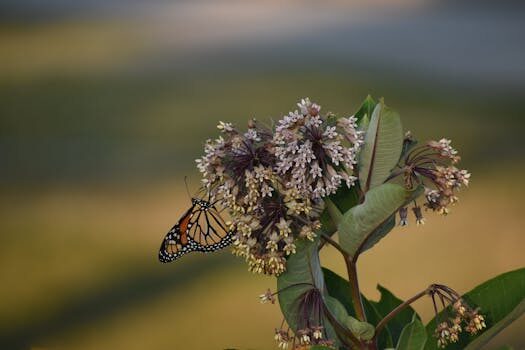
Participate in local plant swaps or gardening clubs to acquire milkweed. These venues often provide not only the plants but also valuable advice on how to care for them in your specific climate and soil conditions.
To give readers a visual and practical guide on milkweed care, here’s a helpful video:
Frequently Asked Questions About Milkweed and Monarchs
When is the best time to plant milkweed?
The optimal time for planting milkweed is in the spring after the last frost or in early fall. This allows the plants to establish a strong root system before the onset of winter. Seasonal planting considerations may vary depending on your geographical location.
For areas like Texas, planting native milkweed in the fall, particularly around the regions of San Antonio and Austin, is recommended to support monarch conservation efforts. Checking local planting guides for the best time to plant in your region will further ensure success.
How can I propagate milkweed from cuttings?
Propagating milkweed from cuttings is a straightforward process. Take cuttings of new growth in the late spring or early summer, remove the lower leaves, and place the stem in a container with water. Once roots have formed, transplant the cutting into soil. This method helps to produce genetically uniform plants and can be especially effective for ornamental or ecological purposes.
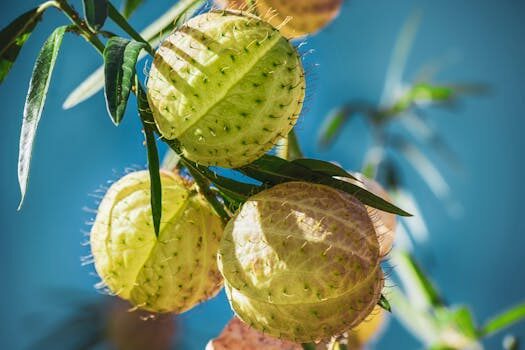
What are the benefits of planting milkweed in my garden?
Planting milkweed offers numerous benefits, including attracting and supporting monarch butterflies, providing food for caterpillars, and supplying nectar for a variety of pollinators. Milkweed also adds aesthetic value to gardens with its vibrant flowers and can contribute to local ecosystem health.
What types of milkweed are best for Monarch butterflies?
For monarch butterflies, the best types of milkweed are those that are native to your region. Common varieties that are favored by monarchs include common milkweed (Asclepias syriaca), swamp milkweed (Asclepias incarnata), and butterfly milkweed (Asclepias tuberosa). Be sure to select the types that grow well in your area’s climate and soil conditions.
How do I care for milkweed plants?
Caring for milkweed involves providing full sun, well-drained soil, and moderate watering. Monitor for pests and diseases, and manage them promptly. Deadheading spent blooms can encourage further flowering, and cutting back plants in late fall can help control growth and invasiveness.
 How to grow cherries: now is the perfect time to plant your cherry tree
How to grow cherries: now is the perfect time to plant your cherry treeBy following this milkweed care and growing guide, gardeners can play a crucial role in the conservation of monarch butterflies while enjoying the beauty and ecological benefits of these plants in their own backyards.

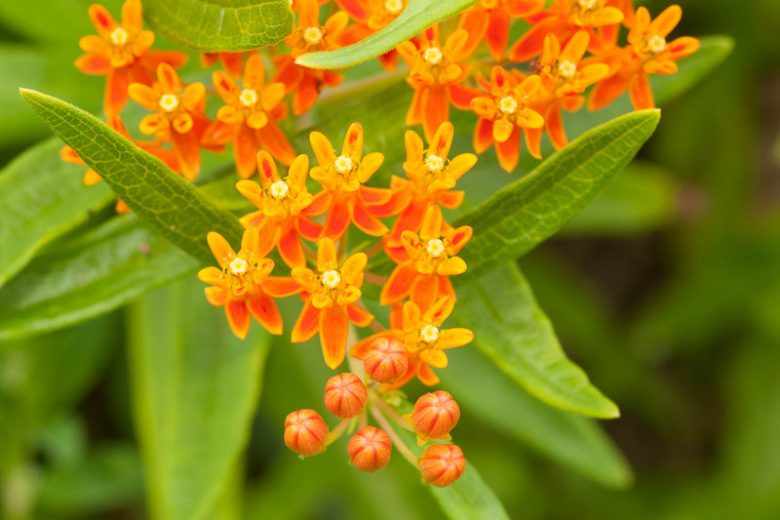
This guide is a gem for anyone looking to support monarch butterflies and create a vibrant garden space! The detailed tips on planting and maintaining milkweed are super helpful, especially for someone like me who’s just getting started with gardening. I love how it emphasizes the importance of native species and the role we can play in conservation. Can’t wait to try growing some milkweed in pots—I appreciate the step-by-step advice on that too!